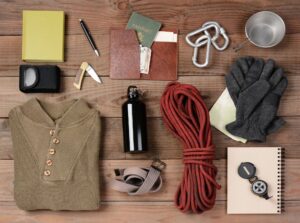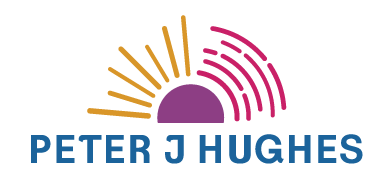
Shift happens. There is no way around it; the only way is through it. What determines the state of our well-being when we come out the other side is influenced and informed by who we choose to Be while walking through the shift storm.
Growing up in Southern California, where the natural phenomenon of earthquakes and aftershocks were part of the reality of living seventeen miles from the San Andreas fault line, we learned to move (quite literally) with the natural way of things. The first quake was always the most dramatic because it would appear to come out of nowhere. Only if you had learned to recognize the warning signs (birds going silent, the frantic barking of dogs, an eerie stillness in the air) would you have the potential to make your way to the nearest doorway or dive under the sturdiest table before the first jolt or ripple of shock waves would roll from underfoot.
A mild to moderate quake, depending on the duration and intensity, could be like riding a stand-up roller coaster, rolling and jolting with nothing to hold on to that wasn’t moving. As unnerving as the total (if only temporary) loss of control was, most quakes would trigger an adrenaline rush, leaving your eyes wide as saucers and you short of breath. If physical damage marked the event—a crack in the wall, a broken vase, or a tilted painting—you would have physical proof to justify your howler monkey screaming or slightly soiled undergarments.
The larger quakes, however, were another story all together. With these more destructive and potentially life-threatening quakes, things could, in a matter of seconds, advance to a full-on natural disaster. With these more intense quakes, or for that matter, any quake, a guaranteed and unpredictable number of aftershocks would vary in degree of intensity and regularity. It was this “not if, but when” uncertainty that caused much trauma. With the initial earthquake, you don’t see it coming, and it catches you by surprise, kicking the fight- or- flight survival instinct into superhuman mode. With the unsettling and disorienting effects of potentially dozens of aftershocks eating away at your nerves, your nervous system can become so fatigued that the slightest sound or movement will induce a total meltdown. (It was four months after the Whittier quake of 1987 before I was able to sleep through the night without breaking out in a cold sweat of panic with the slightest disruption.)
Unless we are conscious and intentional about how we manage ourselves, we can easily spin out of control with our emotions, thoughts, words, and actions. In this, we, ourselves, become the natural disaster, triggering a parade of aftershocks and leaving a trail of physical and emotional damage in our wake.
When we live in a geographical region known to be vulnerable to natural phenomena and potential natural disasters, we can take steps to be prepared to navigate such events. If we live along a fault line, in tornado alley, in a flood zone, or at the base of a volcano, we take precautions: we have a plan of action and an updated stock of supplies. Having these things in order isn’t about living in fear of “if ” a natural disaster will take place; it is about living as a conscious, cooperative component with nature and moving into action “when” a natural phenomenon happens.
Natural phenomena take place. It’s the natural order of things. We can work with them, or we can work against them. We’re going to experience these phenomena, there’s no way around them, and we do not control them—hard as we may try. The only way for us is through the experience. The better prepared we are, the more effectively and efficiently we navigate the process. We can’t control them; however, we can choose to what degree we are controlled by them.

